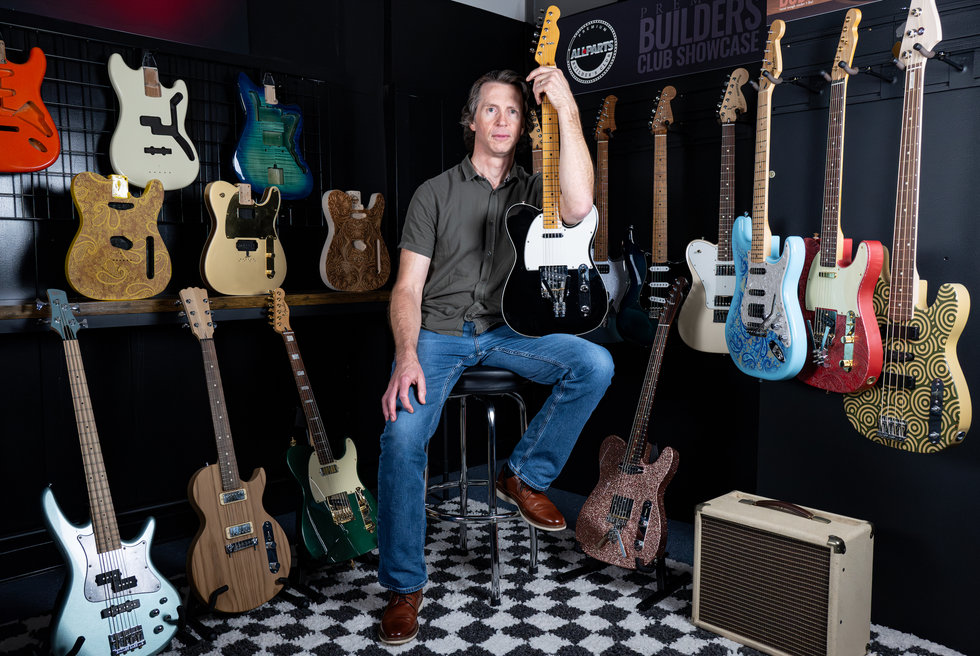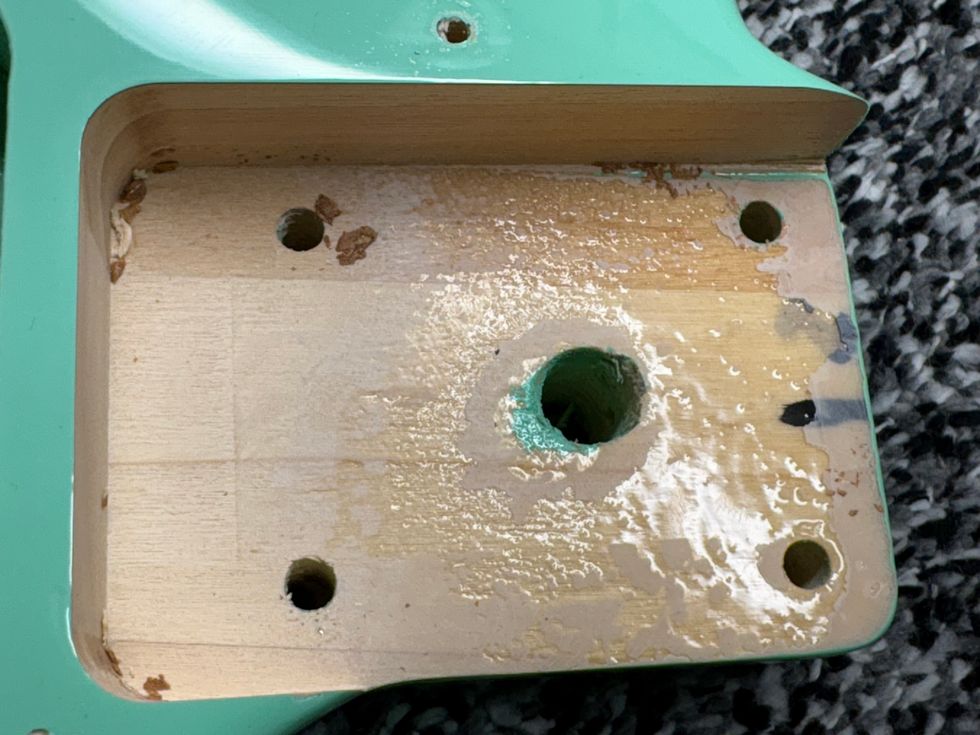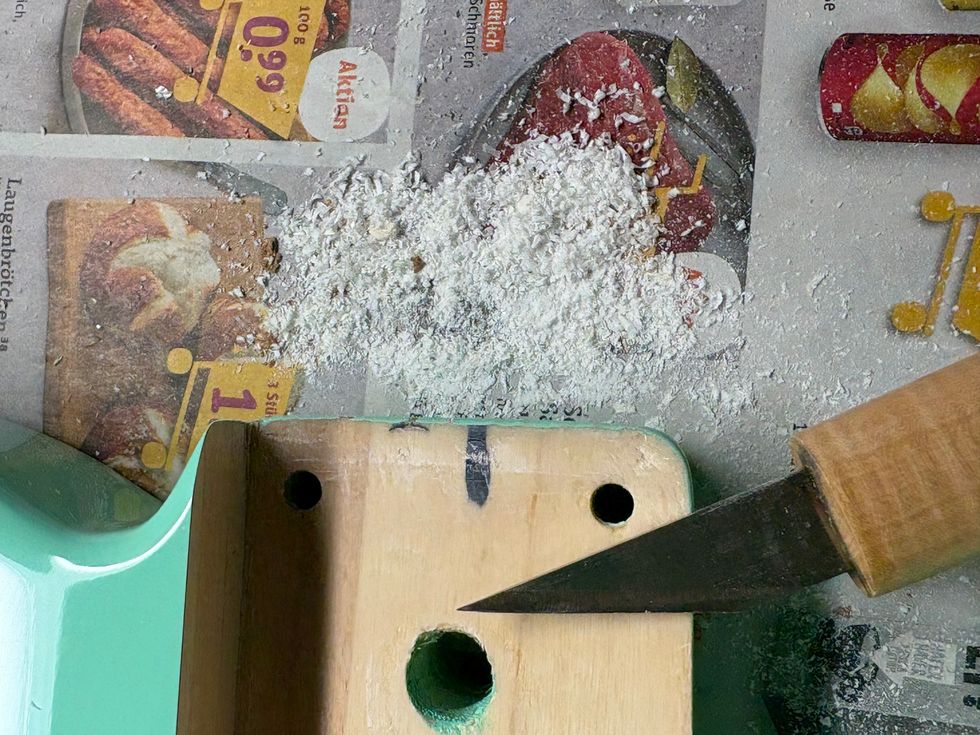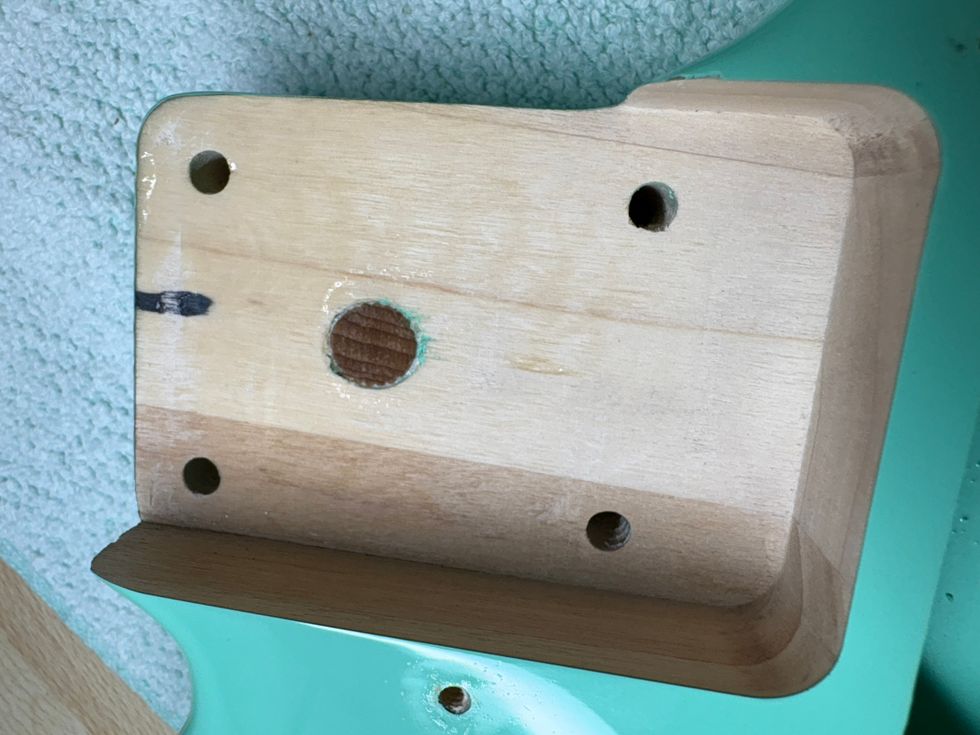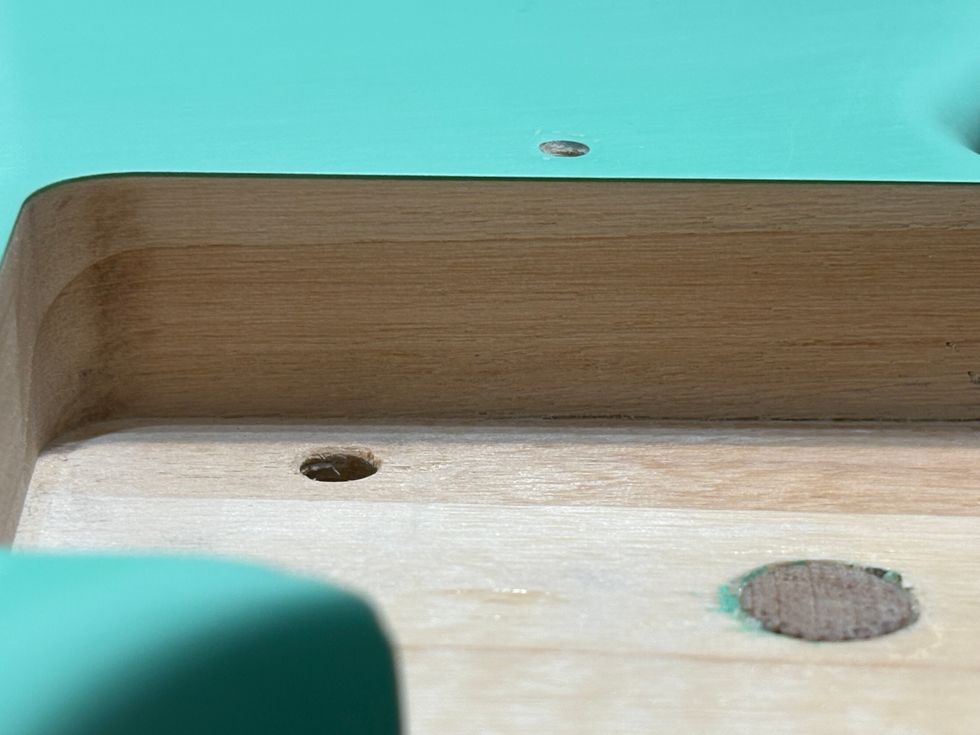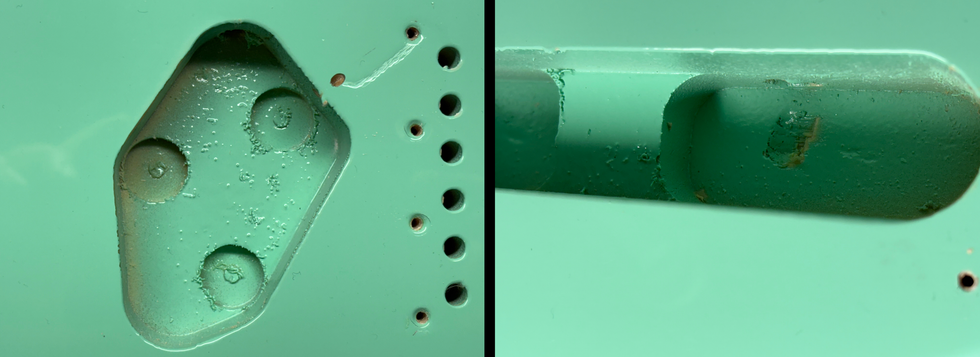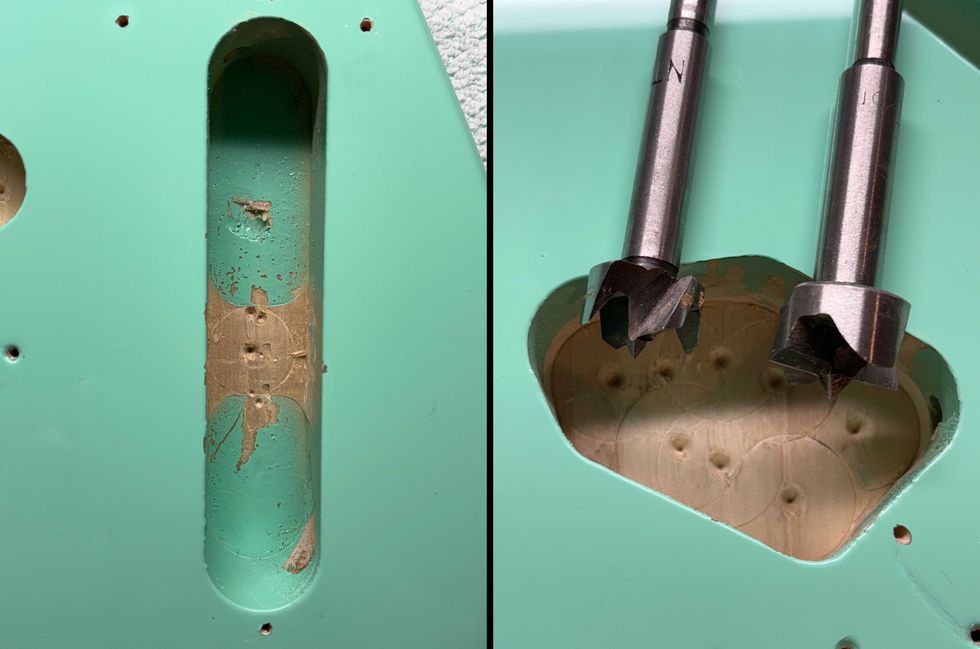Most of my gigs involve going from a bass to
an amp to the audience’s ears—PA support
is rarely part of the equation. But as soon as
there’s a need to get bass into the house system,
things begin to feel precarious and the
challenges are many. Some potential problems
are within your control, but for others, you
have to hope for good luck. Let’s take a look at
some of those possible problems and what you
can do to avoid them.
Keeping the Level Level
Sound level needs to be considered in two ways:
stage level and DI level. Stage level requires a
tenuous balance between being heard onstage
and not being heard in the house. Send the bass
to the board through a direct box (or the pre-EQ setting on an amp’s internal DI), then tweak
the amp for a clear onstage sound, rolling off
some bass while boosting those mids that pop
right out of the mix.
In other words, pushing the low end doesn’t
help you hear a bass better onstage. Instead,
bump up the mids on the edge of a note.
Avoid that smiley-face EQ that scoops out
mids while emphasizing lows and highs—it
might sound fine at home, but it’s guaranteed
to get lost once everybody starts to play.
Regarding the level to the soundboard, the DI
built into an amp often sends a hot signal—
sometimes too hot. When that happens, the
bass sounds distorted in the house and the
attack of your notes crunches, maybe even
getting to the point of a full-out distortion.
One way to manage your direct signal is to
turn down your amp’s DI level. Another is to
carry a DI pad adapter that knocks down the
signal by 10, 20, or even 30 dB. Another good
route is to use an external DI box, since these
don’t usually add any gain to a bass signal.
Getting a Buzz On (and Off!)
The stage is full of opportunities for hum and
buzz. Light dimmers and single-coil pickups
don’t mix well, but dimmers are tough to
avoid. Ditto for power coming from a generator.
One source of buzzing that can be controlled
is the ground loop. You have a good
chance of ground loop buzzing if you use your
amp’s DI, but most amp DIs and DI boxes have
a ground lift switch. If you hear a buzzing when
the amp powers up, flip the ground lift switch
to see if the buzz goes away.
Some of my amps don’t have a ground lift
option, though, so I carry a ground lift adapter
that can be plugged into the cable going to
the PA board. A sure-fire fix is to use an external
box instead of the internal DI—these all
have a ground lift switch.
To DI or Not to DI
That is the question. Whether ’tis nobler to
stick with a DI or to mic the bass cab presents
a bassist with a sea of troubles. Using a mic
adds yet more “water” to the “sea.” As soon
as a mic becomes part of the equation, the
tone and volume coming from the cab make
a sound person’s job more challenging. It’s no
longer possible to thin out the onstage tone
for clarity. Even the type of mic and where it’s
placed on the speaker make a sonic difference.
My preference is to use an amp’s direct out
and then make sure that the sound tech gets a
good signal that’s not too hot and doesn’t buzz
or hum. A second choice would be a good,
active DI box that I’ve brought along and
know. The third choice is to use the house DI
box—many of these are cheap, passive devices
that send a crummy sound to the house and
a worse tone to my amp. An active DI, in contrast,
buffers the signal to retain the sound I’m
after, especially with a passive bass.
Enter the Sound Tech
Beyond your choice of direct out options, the
sound tech you’re working with can make
all the difference. If the tech suggests using
a house DI box, consider that suggestion.
You can always ask to use something you’ve
brought along, but be sure your signal level is
right for the soundboard and that there’s no
buzzing from a ground loop.
EQ is the other challenge. For some reason,
many sound techs like to show off that their
PA system has big subwoofers and powerful
amps—that’s my theory anyhow. The result is a
muddy bottom, with the bass buried beneath
a kick drum strong enough to restart a failed
heart. If you can, have somebody go out front
during the soundcheck and make sure that the
bass is not overpowering on the low end (and
make gentle suggestions to the tech about
changing the house mix EQ).
In all, when you need to go into the house
sound system, the risks abound for producing a
less-than-perfect tone. Keep these ideas in mind
and you’ll have a better chance for success.
Dan Berkowitz
Dan Berkowitz is a professor by day and a bassist when the sun goes down. He plays in blues, jazz, pit, and classical settings. You can reach him at profdanb@gmail.com














![Rig Rundown: Russian Circles’ Mike Sullivan [2025]](https://www.premierguitar.com/media-library/youtube.jpg?id=62303631&width=1245&height=700&quality=70&coordinates=0%2C0%2C0%2C0)




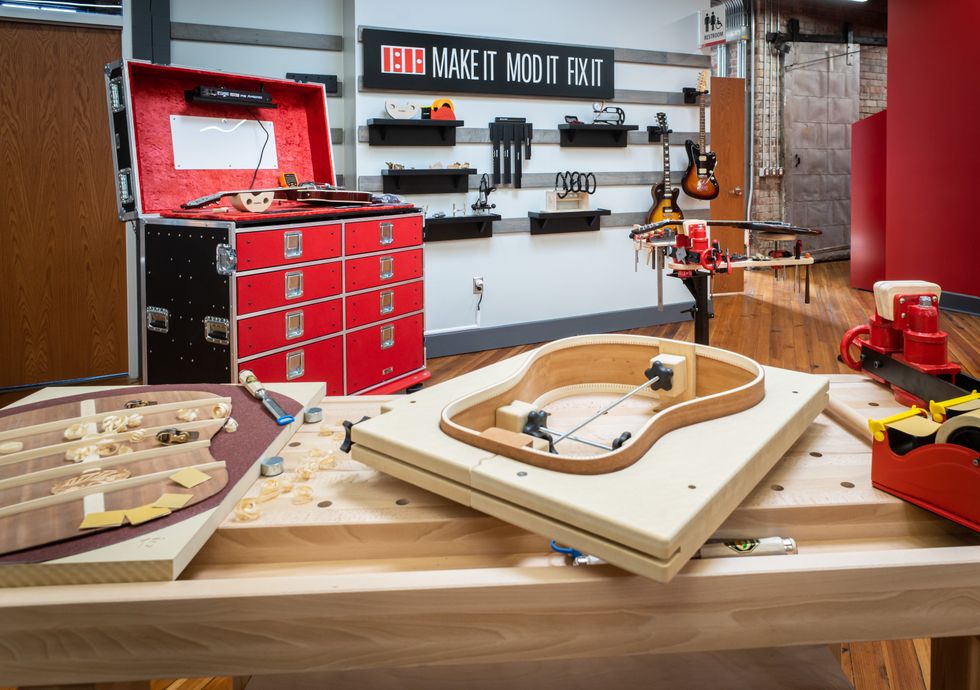

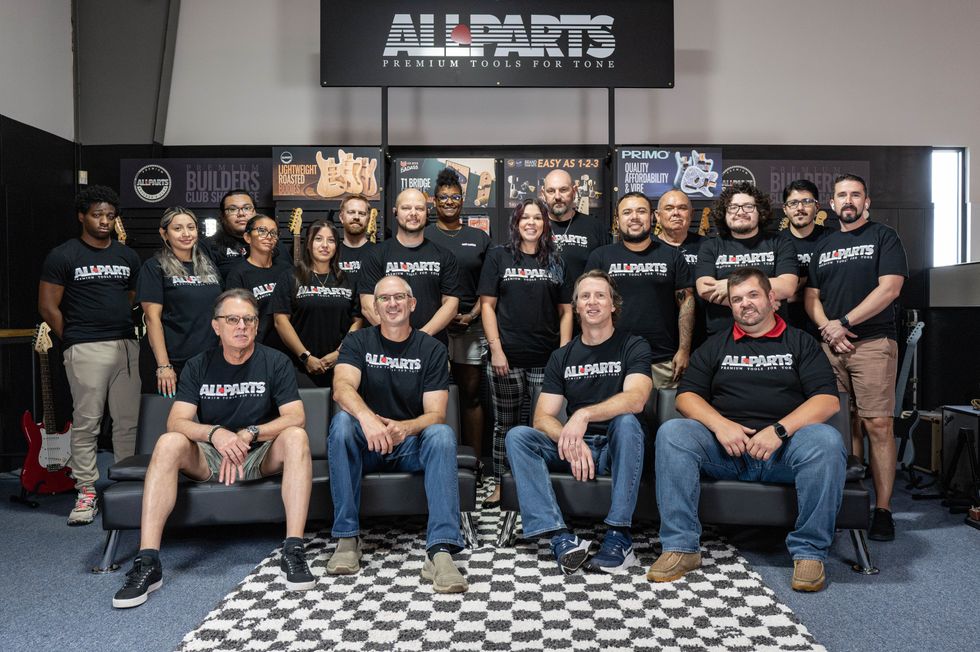 The Allparts team at their Houston warehouse, with Dean Herman in the front row, second from right.Photo by Enrique Rodriguez
The Allparts team at their Houston warehouse, with Dean Herman in the front row, second from right.Photo by Enrique Rodriguez